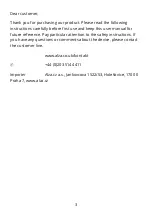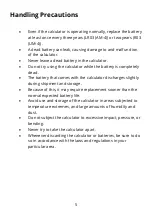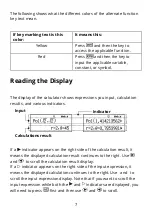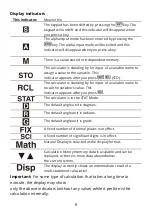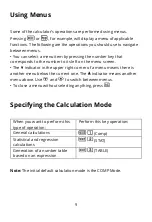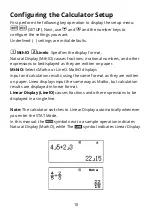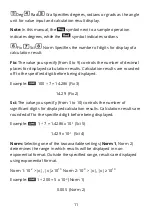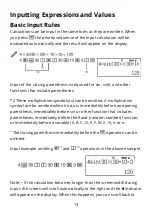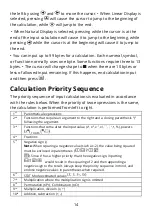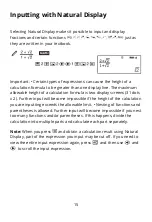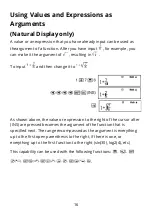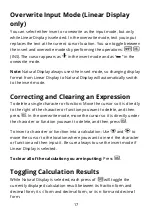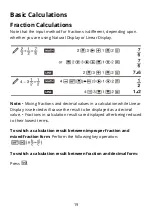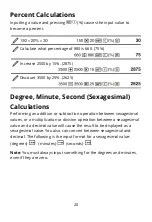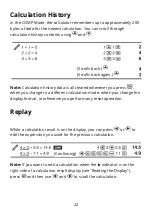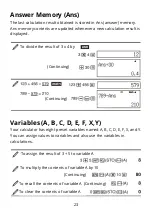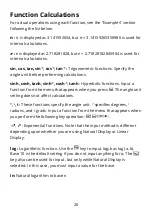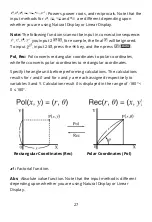
14
the left by using
and
to move the cursor. • When Linear Displ
ay is
selected, pressing
will cause the cursor to jump to the beginning of
the calculation, while will jump to the end.
• When Natural Display is selected, pressing while the cursor is at the
end of the input calculation will cause it to jump to the beginning, while
pressing
while the cursor is at the beginning will cause it to jump to
the end.
• You can input up to 99 bytes for a calculation. Each numeral, symbol,
or function normally uses one byte. Some functions require three to 13
bytes. • The
cursor will change shape to when there are 10 bytes or
less of allowed input remaining. If this happens, end calculation input
and then press
.
Calculation Priority Sequence
The priority sequence of input calculations is evaluated in accordance
with the rules below. When the priority of two expressions is the same,
the calculation is performed from left to right.
1
st
Parenthetical expressions
2
nd
Functions that require an argument to the right and a closing parenthesis “)”
following the argument.
3
rd
Functions that come after the input value (x
2
, x
3
, x
-1
, x!,
°´”
,
°
,
r
,
g
, %), powers
, roots
4
th
Fractions
5
th
Negative sign (-)
Note
: When squaring a negative value (such as -2), the value being squared
must be enclosed in parentheses (
). Since x
2
has a higher priority than the negative sign, inputting
would result in the squaring of 2 and then appending a
negative sign to the result. Always keep the priority sequence in mind, and
enclose negative values in parentheses when required.
6
th
STAT Mode estimated values
7
th
Multiplication where the multiplication sign is omitted
8
th
Permutation (nPr), Combination (nCr)
9
th
Multiplication, division (x, ÷)
10
th
Addition, subtraction (+, -)



